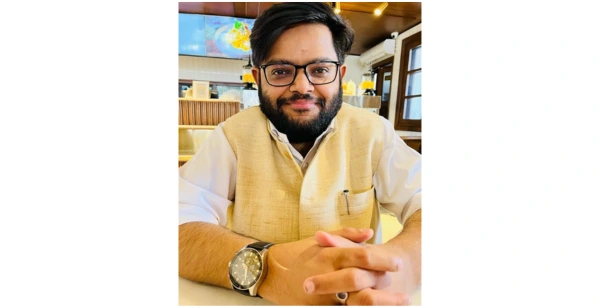Ways for Indian medical students to accomplish their goal of practicing medicine in the USA.

Manish Kumar, Director of Admissions from AMP-ROSS University School of Medicine (RUSM), provides a detailed discussion on the USMLE.
For numerous medical aspirants from India, the ultimate ambition extends beyond merely becoming a doctor; it involves donning the white coat within a globally esteemed hospital, engaging in research at premier institutions, and leaving a significant impact on the world’s most sophisticated healthcare system, namely the United States. Although the journey towards practicing medicine in the US as an Indian student is arduous, it is not unattainable. With appropriate planning, guidance, and preparation, this aspiration can be realized.
Acquiring detailed knowledge about the progression of a medical career in the United States.
Contrary to the educational process in India, where students commence MBBS studies immediately following Class 12, the United States employs a more extensive, multi-step approach. Initially, students are required to complete a four-year undergraduate or pre-medical degree, commonly in science-based fields like biology or chemistry, and successfully clear the MCAT (Medical College Admission Test). Afterward, they may apply for an MD (Doctor of Medicine) or DO (Doctor of Osteopathic Medicine) program.
The medical educational journey in the United States spans four years and integrates both classroom and clinical training. Students take the USMLE (United States Medical Licensing Examination) Step 1 upon finishing their second year, followed by Step 2 in their fourth year.
After graduation, they must apply through the NRMP (National Resident Matching Program) to acquire a residency position, which is a specialized training program that can last anywhere from three to seven years. USMLE Step 3 is generally undertaken during the first or second year of residency.
Some doctors choose to further their expertise through fellowships. To practice independently, physicians are required to obtain a medical license in the state where they wish to work, as each U.S. state has individualized licensure prerequisites.
Selecting International Pathways Intended for the United States
A growing trend is the enrollment in international medical schools that are specifically structured to align with U.S. and global licensure pathways. Some of these institutions, particularly in the Caribbean, offer U.S.-style curriculum, are accredited by recognized organizations, and are included in the World Directory of Medical Schools. Additionally, many of these schools facilitate clinical rotations in the U.S. and incorporate USMLE preparation into their programs. These pathways are attractive because they offer a combination of international exposure, access to U.S. hospital systems, and a multicultural learning environment, all of which enhance residency applications.
Preparing for the USMLE and Residency Match
Achieving success in the USMLE, particularly in Step 1 and Step 2 CK, is essential. However, in addition to achieving high scores, applicants must cultivate a robust and well-rounded profile. This entails engaging in US clinical rotations, acquiring research experience, participating in community service, and demonstrating excellent communication skills.
The NRMP assesses candidates based not only on their academic accomplishments but also on their personal attributes during the residency match process.
Mentorship from experienced seniors or alumni who have effectively navigated the matching process in the US can offer invaluable advice. This guidance can encompass selecting programs, drafting personal statements, and preparing for interviews.
Important Factors for Aspirants from India
- Commence early: Whether you are in high school or at a medical college, early exposure to relevant activities like summer programs, shadowing, or research is beneficial.
- Stay informed: It is crucial to comprehend the licensing and visa requirements. For instance, international medical graduates are required to obtain certification from the Educational Commission for Foreign Medical Graduates (ECFMG) in order to enter a U.S. residency program.
- Invest in quality: It is advisable to select institutions that adhere to USMLE standards and provide U.S. clinical exposure.
- Remain resilient: The journey is both lengthy and demanding, characterized by competitive examinations, financial commitments, and occasional setbacks. However, the personal and professional benefits that one gains upon completion render the effort worthwhile.
As the United States continues to experience an increasing demand for skilled physicians, Indian students, with their robust academic backgrounds and global perspective, are particularly well-positioned to meet this demand.
Through determination and strategic planning, the aspiration of becoming a doctor in the United States can be transformed into an extraordinary reality.
(Manish Kumar, Director of Admissions at AMP-ROSS University School of Medicine (RUSM). The opinions expressed are his own.)



